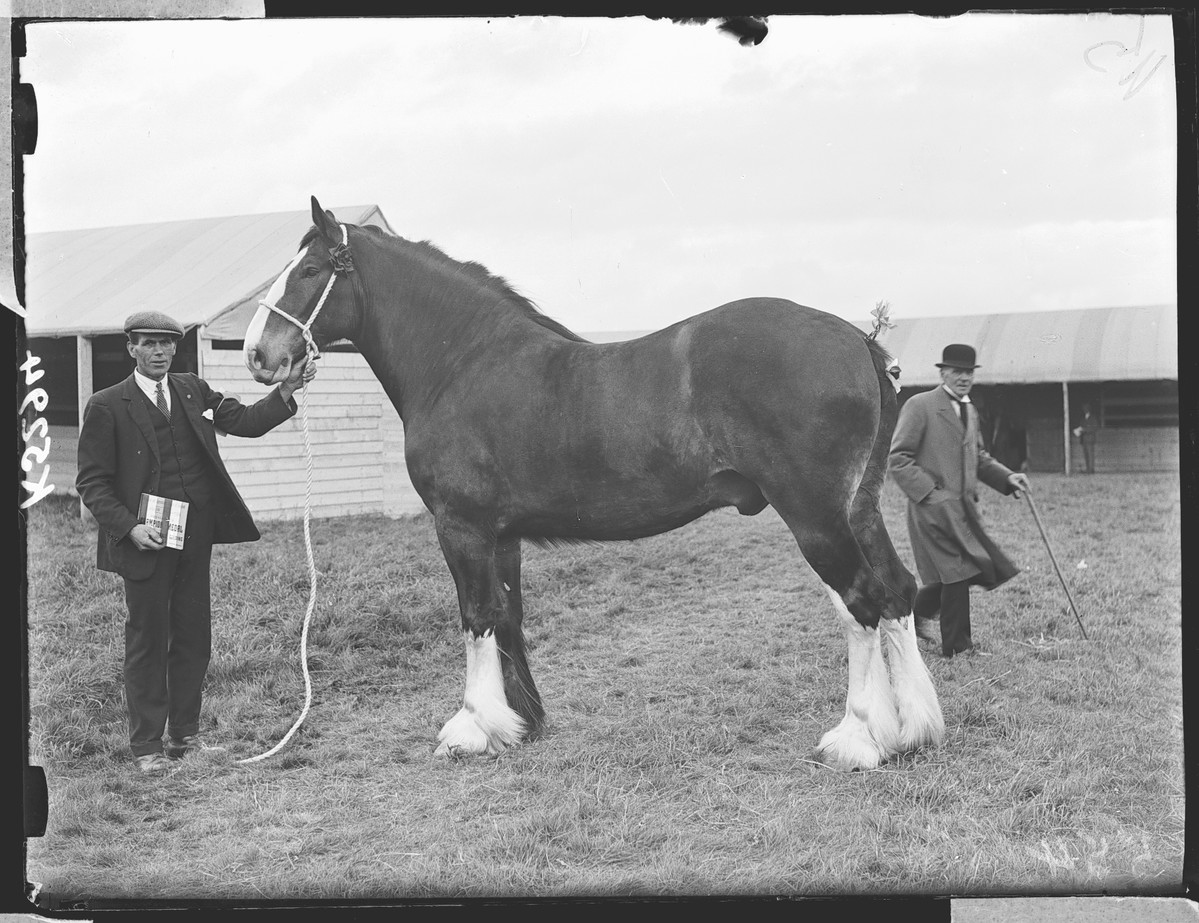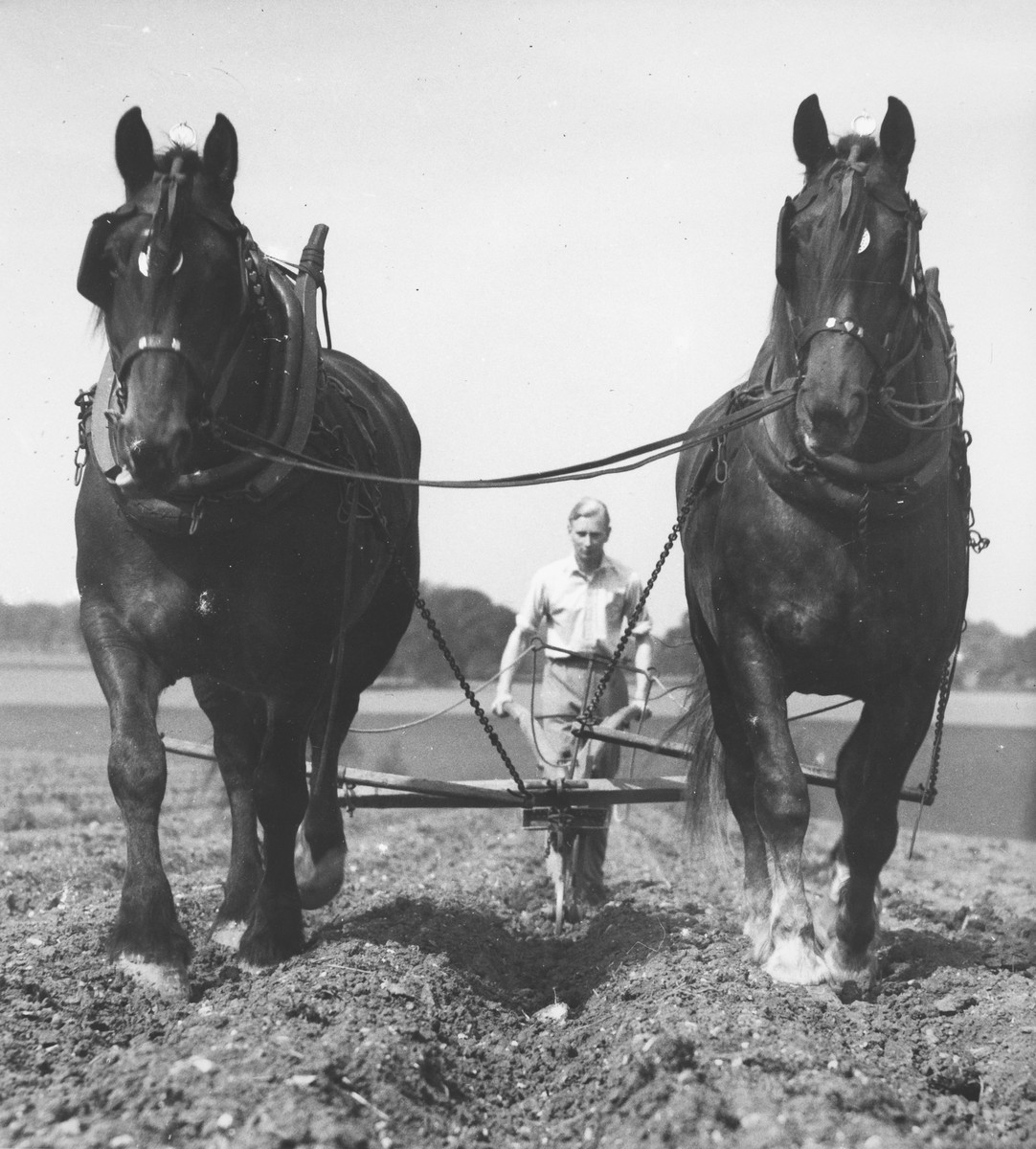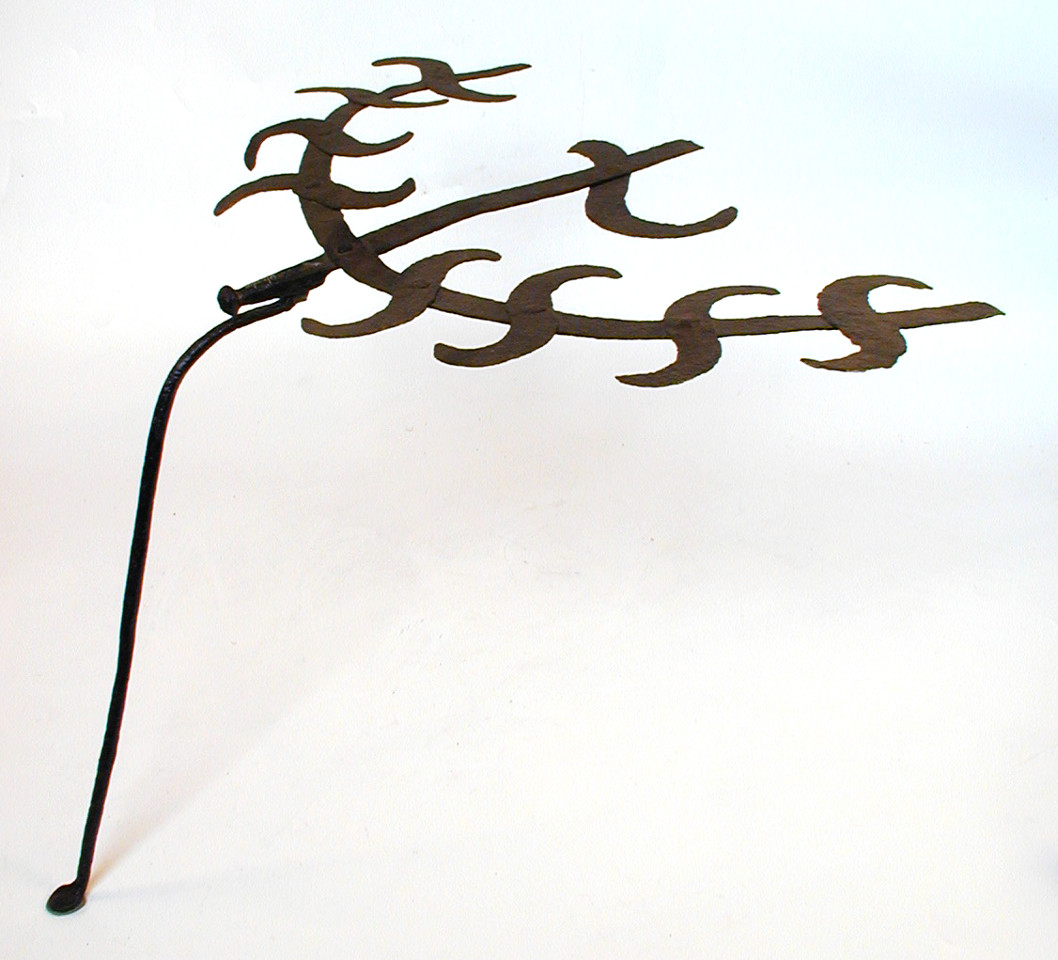Horseman’s Word: a secret society of horse wizards
In The MERL reading room, we keep a collection of documents that we call ‘Classified Files’. These are not about UFOs, the Loch Ness Monster, or sightings of Big Foot in rural Essex. Instead, they are copies of documents, arranged by MERL classification.
However, the Classified Files do contain many remarkable rural secrets. Which is exactly what MERL researcher Tim Jerrome found in late 2020 whilst working on the Building Connections project, when he discovered within the files an article titled ‘Horseman’s Word: Light on a Mysterious Secret Society’ (Aberdeen Press and Journal).
The article told the tale of a group of agricultural labourers, working across Britain in the 19th and early 20th centuries, who developed a reputation for possessing an otherworldly knack for controlling heavy horses. And many people speculated they were able to do so through the use of magical powers.
Below, join Tim as he journeys through the recorded history of the Horseman’s Word. He explores several of the Society’s most famous arcane accomplishments, outlines the rituals they undertook to achieve them, and asks to what extent the skill of the Horseman’s Word can be explained by agricultural science.
Who were the Horseman’s Word?
Horseman’s Word first rose to prominence in the 1830s, most strongly in north-east of Scotland, but equally gaining influence in English counties such as Norfolk and Suffolk.
This was the same time that the new Clydesdale horse – bred from huge imported Flemish stallions – took over from oxen as Scotland’s premier plougher.ii As such, men who could work with horses across the everyday toils of farming life were in high demand.
Quite quickly, the mystical abilities of the Horseman’s Word catered to this need. Members demonstrated a seemingly supernatural control over working horses, making them walk and stop at will and perform a multitude of bizarre feats, whilst simultaneously inspiring awe amongst uninitiated labourers.
But how did the Horsemen gain their powers? Did they deserve the title of ‘horse-witches’ and ‘horse-warlocks’ that was attributed to them?i Did they really dabble in sorcery which has since been lost?

A classic example of a Scottish Clydesdale horse in 1934, owned by the Corporation of Glasgow. (MERL P FS PH1/K5294)
Starting to smell a rat – or, at least, a mole
Two key skills of Horseman Word members were in the ‘drawing’ and ‘jading’ of a horse, inducing the horse to walk and stop. Yet rather than deriving this knack from magical spells, as thought by much of the general populace, these abilities came from a detailed knowledge of horse behaviour, particularly their acute sense of smell.
Walter Cater, a Horseman from Redgrave in Suffolk, was able to keep his horses in a meadow for five days by slathering a pungent concoction on the fence-posts. This was recounted by his son Mervyn, who did not know the full list of ingredients, as Walter had instructed each of his family members to gather a few items each. Mervyn himself had contributed soot and linseed oil.iii
Another, simpler method of jading a horse was to rub a dead mole upon anything in its path.iv Did Horsemen typically keep a ready supply of dead moles? Were moles murdered specifically for this purpose? A question for another day. We do know that the Society closely guarded their secrets. No records were kept of their meetings, and they had no titled officials who could be questioned about such matters.v
One equine practise which is unusually well-documented is the activity of so-called ‘toad-men’ and ‘toad-women’. As early as 1835, a book entitled The Country Horse-Doctor detailed how a concoction made from toads could be used to draw or jade a horse without fail.vi However, the life of a toad-person was one that bore a heavy burden. For example, the blacksmith George Kirk warned his assistant in 1908 not to learn the art as ‘you will never rest if you do’, as another stallion leader became beset by visions of obsessed horses coming to his bedside at night, whilst his wife complained that nothing in the house would bake.vii

Eye of newt, toe of stoat…
The members of the Horseman’s Word were not simply practitioners of methods that had been around for decades.
Instead, they developed new techniques from observation and experience.
One Horseman, Charles Rookyard of Helmingham, was ploughing with his horses when they suddenly stopped in their tracks. In front of them, a stoat had just killed a rabbit, apparently spooking the horses. At this point, Charles did what any normal person would do; he grabbed the stoat and rabbit, ground them into a powder, and used this concoction to make the horses halt in the future. Though it may seem peculiar to us, this was typical of the strange innovation that the Horsemen demonstrated on a daily basis to earn the Society’s revered reputation.viii
Can all the activities of the Horsemen be explained through science and logic? Perhaps not, as many feats of the Horsemen go unexplained to this day. One particular event, popular with Horsemen wishing to publicly show off their magical prowess, still defies explanation. As part of their demonstration, the Horseman would stick a fork into a dunghill, and hitch a team of horses to it. The horses would then be chivvied into action, and would visibly strain against their harness and traces, but the fork would not move. Members of the crowd would be invited to pull out the fork, and could easily do so. Yet the horses could not make it budge, even when the fork was re-inserted elsewhere on the dunghill. The above-mentioned Mervyn Cater recalled his father Walter demonstrating this trick, but could not figure out how it was done; all he could offer was that it was only done when the ground was frosty, and never in summer.ix
![This dung fork, for spreading manure, was used at the Trial Grounds of Suttons Seeds Ltd., Reading. It consists of a metal head with four tines and a wooden handle, branded T.G. [Trial Grounds]. It is part of a large collection of objects relating to Suttons Seeds Ltd., as well as other rural artefacts, compiled by John Cox, who worked at Suttons from 1931 to 1976, starting as an office boy and finishing as Company Secretary.](/wp-content/uploads/sites/20/2021/03/blog_dung_fork.jpg)
As if to compound the weirdness, new members were then ordered to sleep with an oatcake under their armpit. This did actually have a pragmatic use – the oatcake would be fed to a horse the next morning, and as the horse was then accustomed to the smell, it would let the initiate lead it without complaint. This was to demonstrate that the initiate could already harness the society’s magical powers after just one day.x It seems there were regional differences in the ceremony; a different account speaks of candidates being blindfolded, lying on straw, and being shown secret signs such as the “secret clasp of the hand”.xi Another tells of a Horseman fully dressing up as – and impersonating – the Devil, who harshly interrogates the candidate.xii I’ve had worse job interviews.
It was rumoured that being a Horseman also improved a young man’s chances with women.xiii There’s no real evidence to support this, but why not try an oatcake under the armpit in your Tinder profile picture from now on – whatever your gender. Let us know how you get on.

Horse-whispering confirmed
The Society’s associations with witchcraft did not stop after initiation. For example, Leonard Aldous from Suffolk recalled the use of the ‘hag-stone’ which was a holed flint to be hung above a horse during the night to avoid misfortune.xiv Many non-members were convinced that the Society’s practises were entirely founded in witchcraft. In one instance, Mervyn Cater watched his father convince a pony to continue working simply by talking to it (a technique also known as horse-whispering). When Mervyn relayed this to the other workers, they had the following conversation:
Worker 1: “Did you smell anything strange?”
Mervyn: “No, only the horse’s sweat.”
Worker 1: “You didn’t smell anything like brimstone?”
Mervyn: “No.”
Worker 1: “Well, I did when he had a talk with my old gel!”
Worker 2: “Did you see flames?”xv
Perhaps the most intriguing part of the Society’s lore was the concept of the ‘Word’. It was said that during initiation, candidates would be told a Word which could be used to control the actions of any and all horses, simply by speaking it. It was also a symbol of the bond between a Horseman and a horse, a Word which defined horses and Horsemen as equals. Norman Halkett, a Society member born in 1910 who lived in Aberdeenshire, said that “There was a taking of a very definite oath, an oath which holds the horse just as sacred as your fellow horsemen.”xvi
This attitude also led many to view the Society as pioneers in animal welfare, though this is debatable due to accounts of some of the horse jading substances they used, such as a mixture of mercury and ground glass, which would have caused a very unpleasant feeling when applied to skin.xvii During my research I have seen numerous suggestions of what the Word was, though to relay my findings here would be irresponsible – it could cause terrible damage if it fell into the wrong hands!
Well into the 20th century, the sorcery of the Horsemen continued to be reported by the press, such as an article by the Aberdeen Press and Journal which declared that the Society could “bewitch meal mills and churns, and smite cattle with mysterious sickness.”xviii
Due to the reduced use of horses in ploughing, the Horseman’s Word declined in importance and withdrew from the public eye in the 1930s.xix But we do wonder whether there are still members of the Word out there today. If so, or if you do know anything about the society’s history or anyone who was a member, we would love to hear from you, so please do reach out.
For more stories and tales from the history of the English countryside, keep exploring The MERL blog! Or, why not plan a visit to the museum in person?
References
[i] McKerracher, Archie, ‘The Horseman’s Word’ The Countryman (104:1 1999) pp. 85
[ii] McKerracher, ‘The Horseman’s Word’ pp. 82
[iii] Evans, George Ewart, Horse Power and Magic (London : Faber and Faber 1979) p. 102
[iv] Evans, Horse Power and Magic p. 103
[v] ‘Horseman’s Word: Light on a Mysterious Secret Society’ Aberdeen Press and Journal 18/04/1924
[vi] Pennick, Nigel, Witchcraft and Secret Societies of Rural England: The Magic of Toadmen, Plough Witches, Mummers and Bonesmen (Destiny Books : Rochester 2019) p. 67
[vii] Pennick, Witchcraft and Secret Societies of Rural England p. 69
[viii] Evans, Horse Power and Magic p. 147
[ix] Evans, Horse Power and Magic p. 111
[x] McKerracher, ‘The Horseman’s Word’ pp. 83-84
[xi] ‘The Horseman’s Word’ Banffshire Reporter 18/11/1896
[xii] Pennick, Witchcraft and Secret Societies of Rural England pp. 61-62
[xiii] McKerracher, ‘The Horseman’s Word’ pp. 84, though this myth is recounted in almost any academic text on the Horsemen
[xiv] Evans, Horse Power and Magic p. 148
[xv] Evans, Horse Power and Magic pp. 100 – 101
[xvi] Evans, Horse Power and Magic p. 138
[xvii] Field Theatre Group, ‘The Horseman’s Word project – Lotions, Potions and Charms’ Accessed via https://www.horsemansword.org.uk/lotions-potions-and-charms/ on 26/10/2020
[xviii] ‘Horseman’s Word: Light on a Mysterious Secret Society’ Aberdeen Press and Journal 18/04/1924
[xix] ‘The Horseman’s Word: Is it now unknown?’ Orkney Herald 08/05/1929

One thought on “Horseman’s Word: a secret society of horse wizards”